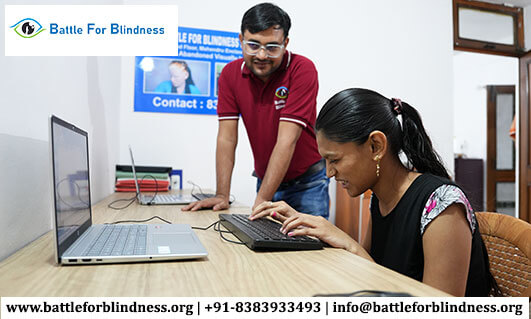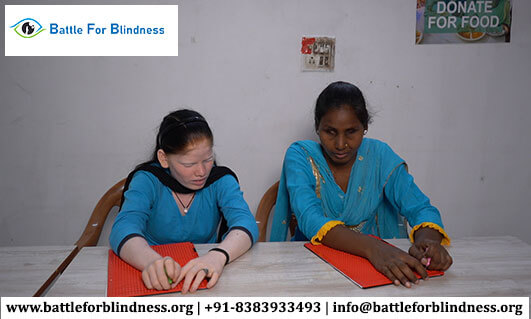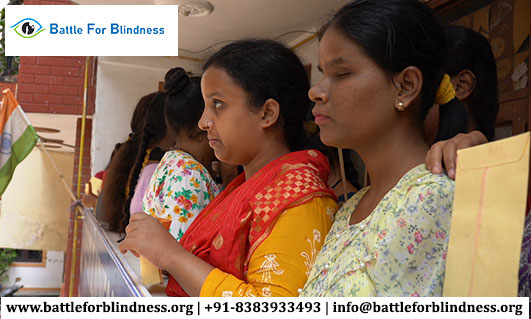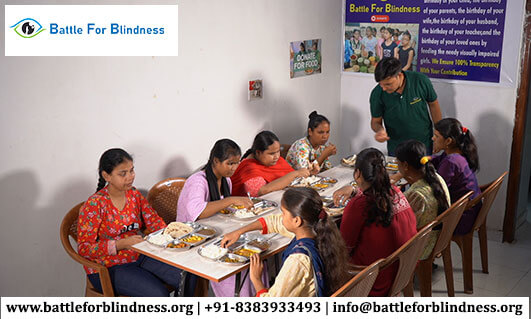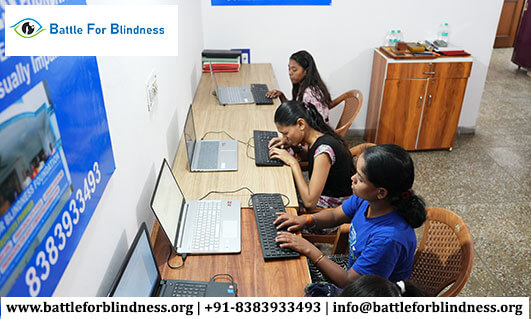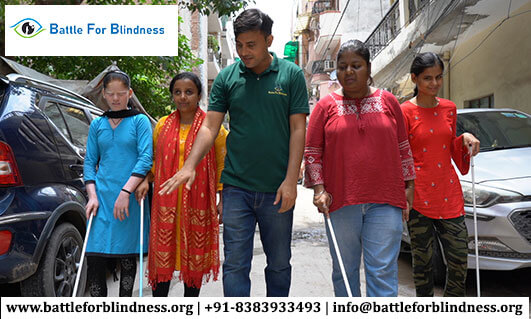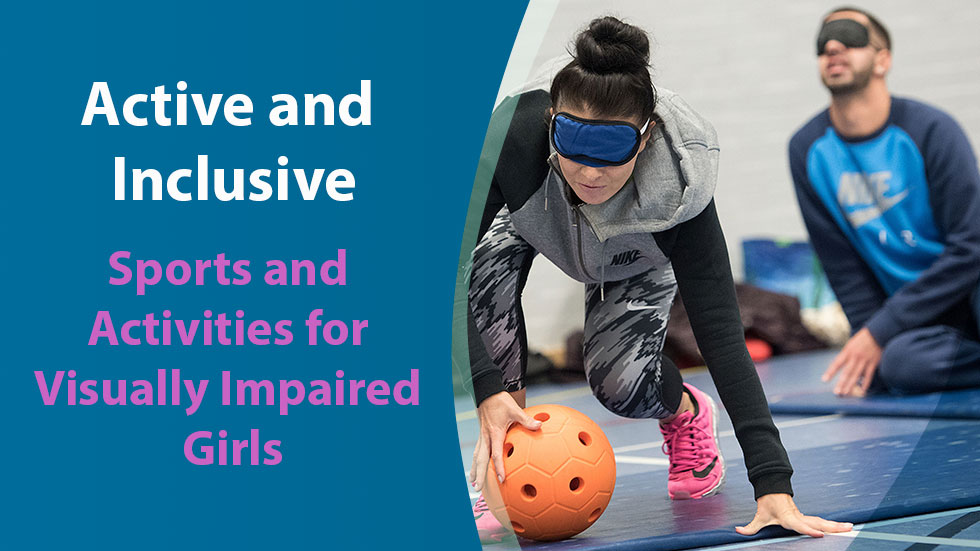
Sports and physical activities are essential to the physical, emotional, and social development of every child. For visually impaired girls, inclusive sports can provide a platform to build confidence, enhance social skills, and improve overall well-being. Whether through team-based activities, individual sports, or recreational pursuits, these inclusive opportunities allow visually impaired girls to experience the joy and benefits of physical activity, just like their sighted peers. This blog explores some of the best inclusive sports and activities for visually impaired girls and how they can help empower and enrich their lives.
1. Goalball: A Thrilling Team Sport
Goalball is a popular and uniquely inclusive sport specifically designed for athletes who are blind or visually impaired. It’s a team game that focuses on speed, strategy, and teamwork, where players must roll a ball with bells inside it into the opponent’s goal. The game is played on a court that is divided into sections for each team, and all players wear blindfolds to ensure the competition is fair for everyone.
- Benefits: Goalball improves listening skills, concentration, teamwork, and physical agility. It also helps build confidence, as players rely on their other senses, especially hearing, to succeed.
- How to Get Involved: Many schools and community centers offer goalball programs. Organizations like the International Blind Sports Federation (IBSA) and local disability sports clubs are great places to start.
2. Tandem Cycling: Freedom on Two Wheels
Tandem cycling is a wonderful way for visually impaired girls to enjoy the freedom of cycling while staying safe. In this activity, a tandem bike is used, where a sighted person (usually the guide) is positioned at the front, and the visually impaired person pedals from the rear seat. The guide steers and provides verbal cues, making it a collaborative and fun experience.
- Benefits: Tandem cycling promotes fitness, independence, and confidence. It also enhances communication between the rider and guide, making it an excellent bonding activity.
- How to Get Involved: Many cities and disability sports organizations offer tandem cycling programs or events. Look for local cycling clubs that provide tandem bicycles and guide services.
3. Swimming: A Lifelong Skill
Swimming is one of the most accessible and rewarding activities for visually impaired girls. Water is a soothing medium that allows for freedom of movement, and many public swimming pools have adapted services for blind or visually impaired swimmers.
- Benefits: Swimming improves cardiovascular health, builds muscle strength, and enhances coordination. It also boosts mental well-being by reducing stress and promoting relaxation.
- How to Get Involved: Many organizations offer swimming lessons specifically for visually impaired individuals, such as the Special Olympics. Pool staff can also provide assistance, and many visually impaired swimmers use tactile markers or guides to navigate the pool.
4. Adaptive Running and Track Events
Running is a simple yet powerful sport that can be adapted for visually impaired girls. With the right support, such as a guide runner, visually impaired individuals can participate in races, marathons, and track events. In these events, the guide runner provides verbal cues, or the runner may hold onto a tether to maintain pace.
- Benefits: Running boosts physical fitness, increases stamina, and helps with stress relief. It also fosters a sense of achievement and empowerment as participants compete in local or national races.
- How to Get Involved: Local running clubs, community sports organizations, and the Special Olympics often offer running programs for visually impaired individuals. Participating in charity runs or marathons is also a great way to get involved.
5. Judo and Other Martial Arts
Judo, along with other martial arts like karate or taekwondo, can be an excellent choice for visually impaired girls looking to enhance physical strength, discipline, and self-defense skills. These martial arts emphasize body awareness, technique, and the ability to respond to opponents’ movements, all of which are highly compatible with visually impaired athletes.
- Benefits: Martial arts build confidence, physical coordination, mental focus, and resilience. They also provide a sense of empowerment, teaching girls to defend themselves and develop self-discipline.
- How to Get Involved: Adaptive judo programs and martial arts classes are available through many community centers or specialized sports clubs for people with disabilities.
6. Horseback Riding: Connection with Animals
Equestrian sports, such as horseback riding and horse therapy, are great activities for visually impaired girls. Riding horses can help girls improve balance, coordination, and build trust and connection with animals. Some adapted riding programs allow for visually impaired riders to participate independently, while others have guides who assist in navigation.
- Benefits: Horseback riding promotes balance, strength, and emotional well-being. It also helps visually impaired girls develop a bond with the horse, which can enhance confidence and emotional regulation.
- How to Get Involved: Look for local therapeutic riding centers or equestrian clubs that specialize in offering inclusive horseback riding programs for individuals with disabilities.
7. Adaptive Dance and Movement Classes
Dance and movement classes are an excellent way for visually impaired girls to express themselves creatively while staying active. Adaptive dance programs often provide tactile, auditory, and verbal cues to help students learn the movements. Dance offers freedom of expression and can include various styles, from ballet to hip-hop to modern dance.
- Benefits: Dance enhances flexibility, balance, coordination, and self-expression. It also improves mental health by reducing stress and promoting creativity.
- How to Get Involved: Many dance studios offer adaptive dance programs or can customize classes for visually impaired students. Non-profit organizations such as Dance for All and local community centers often provide dance classes for people with disabilities.
8. Skiing and Snowboarding: Winter Fun and Adventure
For those who live in colder climates or want to try something adventurous, adaptive skiing and snowboarding are excellent activities for visually impaired girls. Skiing programs use specially trained guides who assist with navigating slopes and ensuring safety.
- Benefits: Skiing and snowboarding are fun ways to enhance strength, balance, and coordination. They also provide opportunities for exploration and thrill, helping build courage and confidence.
- How to Get Involved: Adaptive ski programs are offered by organizations like the National Sports Center for the Disabled (NSCD) and other disability sports organizations worldwide. These programs provide guides and equipment to ensure safety on the slopes.
9. Adaptive Rowing: Water-Based Empowerment
Rowing, a water-based sport, is another great option for visually impaired girls. Adaptive rowing uses equipment that is specially designed to support athletes with disabilities, and visually impaired rowers often work with a guide or coach who provides verbal instructions during the row.
- Benefits: Rowing enhances cardiovascular health, builds strength, and improves team dynamics. It also provides an opportunity for visually impaired athletes to compete at high levels.
- How to Get Involved: Look for local rowing clubs or adaptive sports programs offering rowing as an inclusive sport.
Conclusion
Inclusive sports and activities provide visually impaired girls with invaluable opportunities to engage in physical exercise, develop new skills, and connect with others. Whether it’s through team sports like goalball, individual activities like tandem cycling, or adventure sports like skiing, these inclusive programs empower visually impaired girls to reach their full potential.
By participating in sports, they not only improve their physical health but also gain self-confidence, build resilience, and enjoy the many social benefits that come with being part of a team or community. Inclusive sports help break down barriers, making physical activity a fun, rewarding, and accessible experience for everyone, regardless of ability.
